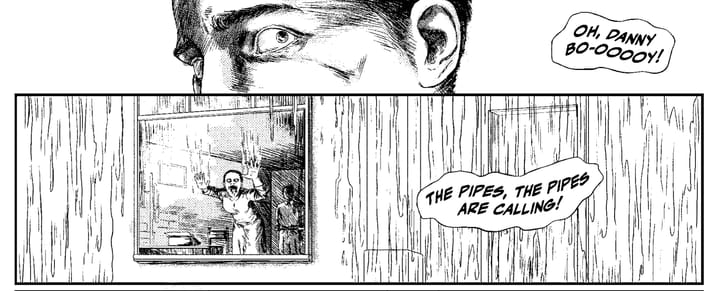Noah Van Sciver Explores Childhood Turmoil and the Power of a Good Comic in Maple Terrace #1
Through captivating artwork and a narrative self-portrait, Noah Van Sciver explores the impact of fear and the transformative power of Spawn #5.

For Noah Van Sciver, Maple Terrace #1 returns to the familiar territory of exploring his childhood, a story that he started in One DirtyTree. In an introductory paragraph titled “Hey! What is This?” he apologizes to his family. “Whenever I draw stories based on my childhood it fills my family with dread… I’m sorry to cause friction with any of them but I can’t leave it alone. I am an artist and I just explore these aspects of my life and tell my stories.” He calls it an “overwhelming compulsion” to create a narrative self-portrait of his life.
And apparently, 1992’s Spawn #5 is a big part of that self-portrait.
Childhood for young Noah, the youngest of at least 5 kids, is the childhood of being an outcast. He sleeps on the floor of the room that he shares with two brothers, where a cockroach crawls over him in the middle of the night because he’s not allowed in one of the two beds in the room. A friend tells him that he’s no longer allowed to hang out with Noah because his mother suspects that Noah is stealing all of their graham crackers. Other kids don’t allow him to tag along when they want to light off some firecrackers after one of them regales the gang with tales of Spawn #5 and how badass the villain Billy Kincaid is. “I thought I smelled a Van Sciver,” the kid says as if he didn’t even notice that Noah was there with them. And when Noah sneaks into his older brother’s attic room to try and read their Spawn #5, he may be taking his life into his hands if his brothers ever find out.

Even if there were no words, Van Sciver’s art builds up the emotional climate of this issue. Looking at the images, there’s this feeling of uncertainty throughout every page that’s like a force acting upon the reader. This transference of oppressive emotions from the artist to the reader creates this growing sense of dread with every page turn and every new person that enters Noah’s life. Maybe it’s the terrorized look in Noah’s simple eyes, cartoony black dots within white circles, that’s all that Van Sciver needs to get to the emotional core of the story but every panel transmits the dread that Noah lives with every day.
It’s this atmosphere of fear that Noah grows up in. It’s rarely a nurturing home or neighborhood as Noah is almost an afterthought to everyone, including cruelly his parents. This isn’t an older and wiser Van Sciver looking back at his childhood with nostalgic-tinted memories. Except for one small act of grace by an older brother at the end of the issue, Van Sciver shows how he grew up under a strict rule of fear and terror, forced on him by nearly everyone in his life. At best for most of this issue, it seems like the moments where everyone around him is indifferent to him are what constitutes peace and belonging for Noah. Van Sciver reflects on his childhood with a memory that’s maybe (hopefully) too focused on the fear he experienced rather than the few moments where someone is honestly kind to him.





Comments ()